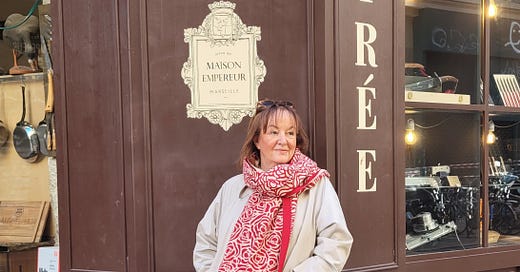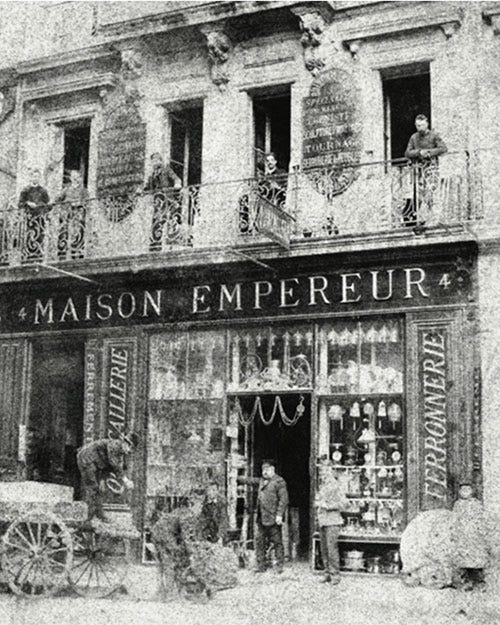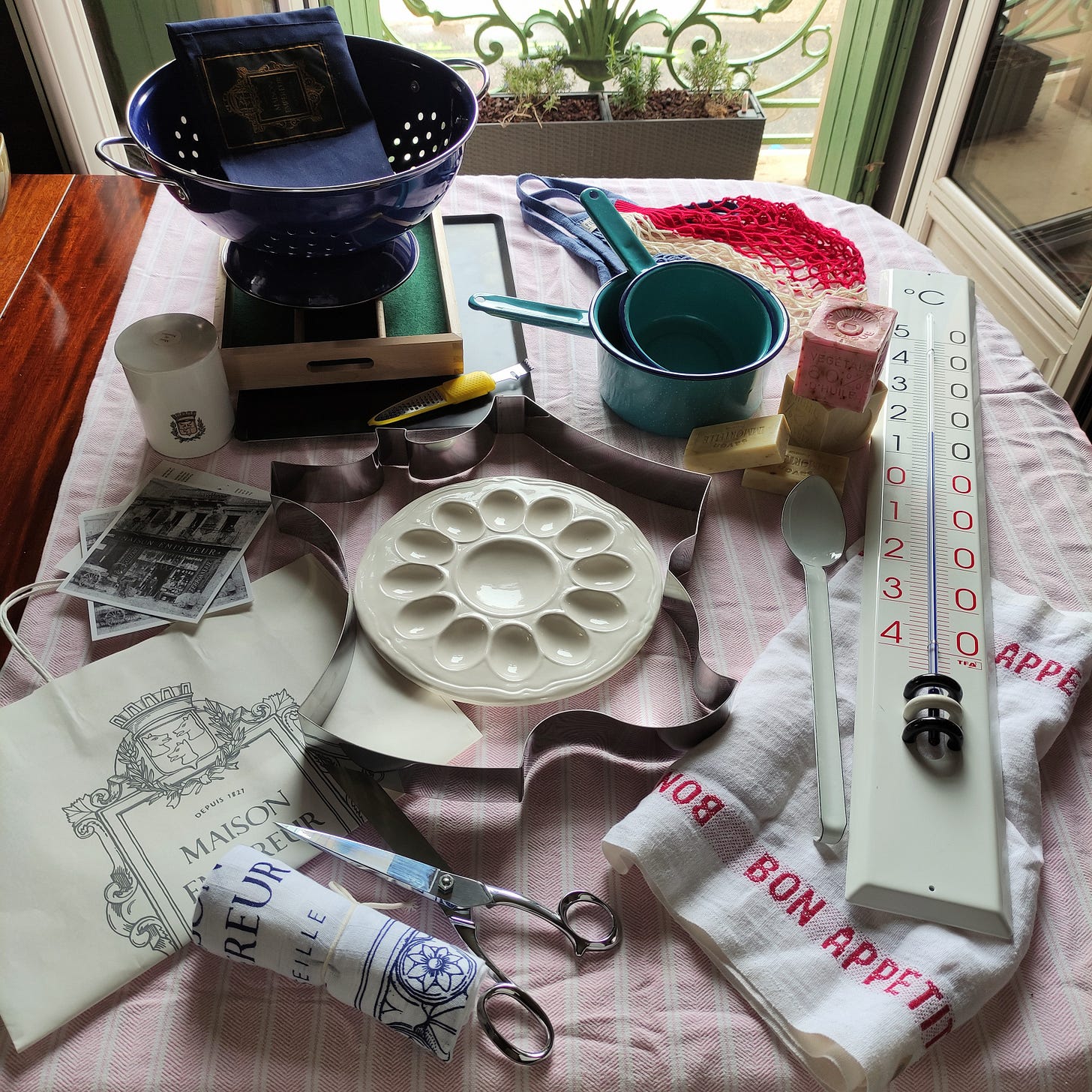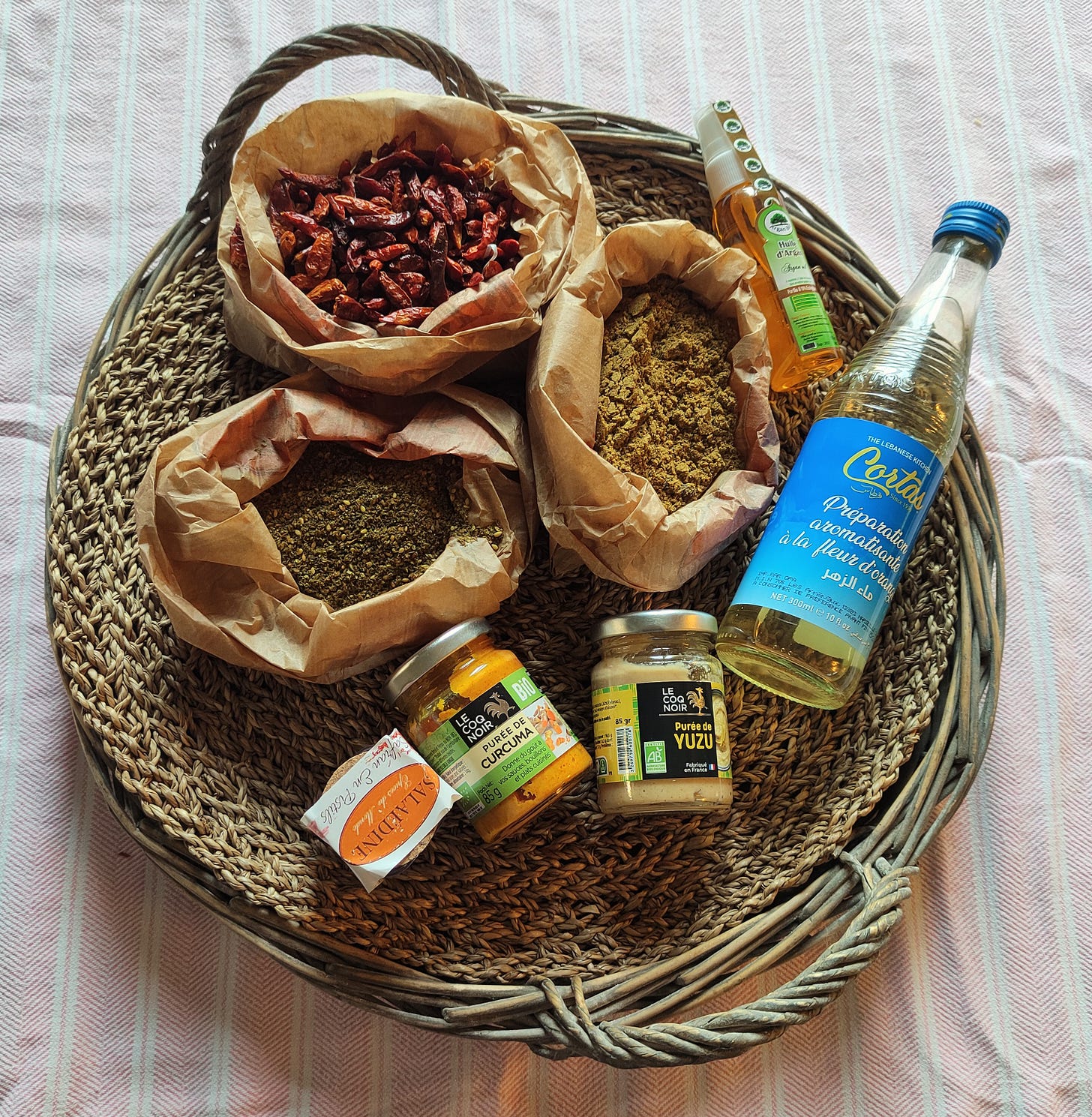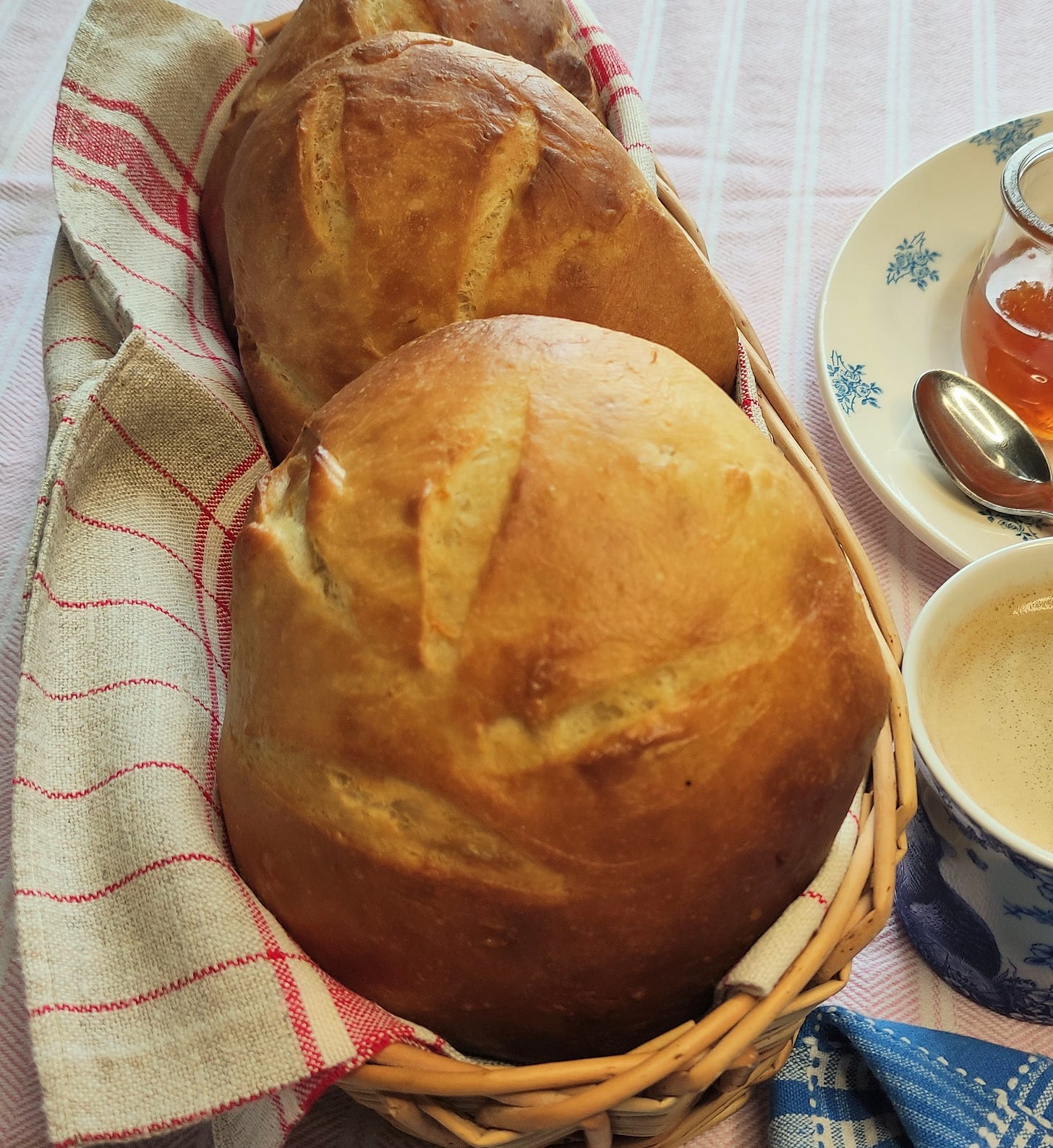The best shop in the world
This week, I visit Marseille and my favourite shop in the world, and share a recipe for pompe à l’huile, the brioche of Provence.
I would like to tell you that I visited Marseille to wander the Vieux-Port, take in the view of the city from Notre Dame de la Garde, light a green candle by the black Madonna in the Abbaye Saint-Victor, eat bouillabaisse by the water, and visit the Musée des Civilisations de l’Europe et de la Mediterranée. While it’s true that I did all these things, that’s not why I went.
A few weeks ago, I was chatting with my friend Julia – my culinary co-pilot these past twenty years – about a shop in Marseille, a place where you can buy brightly-coloured enamel pans and light bulbs, linen napkins and shoe polish, pan scourers and straw hats. Julia lives in Santa Fe now so we don’t see each other as often as we did when we lived within lunching distance of each other in London, but she was going to be in London for a few days. In the American way that minimises distance in the way Europeans minimise time, she said, “Why don’t we just meet in Marseille and go?” If there were ever anyone who loves a French market basket as much as me, it is this woman.
The Maison Empereur, henceforth known as The Shop, is France’s oldest hardware store. It’s been trading since 1827 and is still run by the Empereur family. They stock 50,000 different items, many of them made in France. All the shop assistants wear traditional French bleu de travail jackets (the website counsels customers not to wear their own to the shop, in case they get called upon to offer advice) and are discreet but present. No one is going to harass you, but if you need to know what something is (a tiny three-pronged apéro fork, apparently) or what it does (that olive oil soap is for your horse) or how it works (those tweezers are specially engineered to make them supple with the tiniest movement of your fingers), there will be someone at your elbow who is very happy to help you.
The assistants are the happy heart of The Shop. On our first afternoon, Julia and I left the store after two and a half hours, just as it closed. When we went back the next morning to pick up the things we’d seen the day before that had somehow become essential overnight, the handsome boy with the floppy dark hair in the pan department greeted us with “Rebonjour medames!” A man I’d bought a metre-long enamel thermometer from the day before – the one who, when I said it was a gift for my husband, asked if he had a problem with his eyes – did a double take and asked me if I’d slept in the shop (you can actually sleep in The Shop, the dream, see below). On our second visit, we already felt like regulars.
You can immerse yourself in the beauty of it all without falling over someone finding their light among the paintbrushes and door hinges.
After an hour or so, I found myself thinking about why this was such a serene place, somewhere you felt nothing bad could happen, and it struck me it wasn’t just the characteristic friendliness of the south or the smell of lavender from the bars of soap. You might be wondering why I haven’t yet treated you to a gallery of my terrible pictures, perhaps showing the 30kg block of savon de Marseille, or jars filled with ostrich feather dusters dyed shades of pink and orange, shelves of Marius Fabre cleaning products, market baskets large enough to carry a person, and walls filled with gleaming copper pans (“Merci de ne pas toucher” Please do not touch), but at The Shop, photography is banned. You can immerse yourself in the beauty of it all without falling over someone finding their light among the paintbrushes and door hinges. It wasn’t always so. In this article, Martin Guez-Empereur, the eighth generation of Empereurs to run the shop, explains: “People were constantly taking pictures of themselves for social media, Instagram is not really on the spirit of the company.”
It strikes me that The Shop is what so many expensive modern lifestyle stores aspire to be – the wooden floors and shelving lined with carefully chosen products all designed to appeal to a certain domestic aesthetic, aimed at people willing to spend £80 on floor polish (while paying their cleaner minimum wage). Here, the priorities feel like quality, usefulness, durability and beauty with the latter being entirely determined by how well that lamp or candle or handkerchief fulfils the previous three requirements.
Honestly, if I can’t find it at the Maison Empereur, I’m not sure how much I want it. If I also had access to a food market, I don’t think I would ever need anything more for a serene, clean and happy life.
Next week, I’ll share some more great addresses in Marseille, including some of the restaurants and cafes we visited on our trip.
Maison Empereur
4 rue des Récolettes
13001 Marseille
empereur.fr
Three floors of beauty, so allow a lot of time. There is a charming small café on the ground floor, selling good coffee, teas, and little cakes. You can also stay in the shop’s one-bedroom apartment, see the website for details.
Maison Empereur haul
A pair of dressmaking scissors so I can finally start making the curtains, a tea towel, a cake tin in the shape of France, a plate for devilled eggs, or oeufs mimosa if you’re French, one of Maison Empereur’s own candles, this one is Musc de Noailles, an apron, a huge colander, a drawer divider, a lemon zester, a tricolor string bag, two enamel pans, some bars of soap, a huge enamel thermometer for the terrace, a length of BON APPETIT linen, to make into a roller towel in the kitchen, a white enamel spoon.
Saladin Épices du Monde
I’m grateful to my friend Lola for telling me about this wonderful shop, crammed with every herb, spice and blend you can imagine, plus vats of olives, tapenade, anchovies and pickles. There are also earthenware pots, soaps and a help-yourself vat of savon noir. I’m a little obsessed with savon noir, a natural cleaning product you can use for almost anything, from ovens to floors. I think I’ll write a post about it soon.
My Saladin market haul comprises: yuzu paste, turmeric paste, some saffron, a bag of za’atar (a mixture of dried oregano and thyme, sumac and toasted sesame seeds), a bag of bird’s eye chillies, some lamb seasoning, a bottle of argan oil (I bought this to moisturise my nails, skin and hair), a bottle of orange flower water.
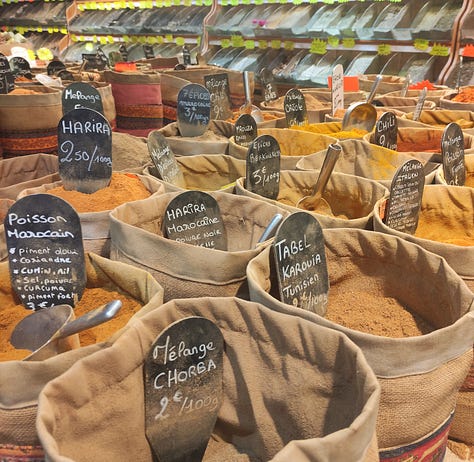
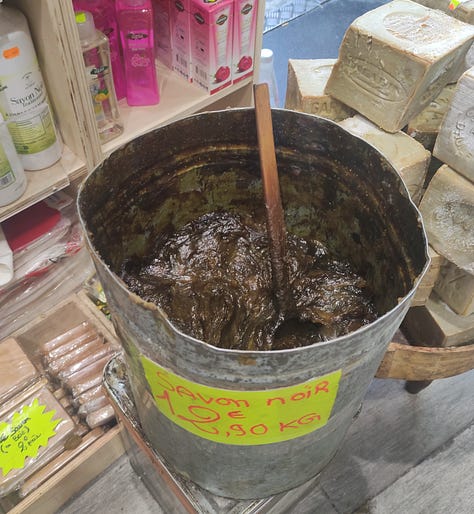
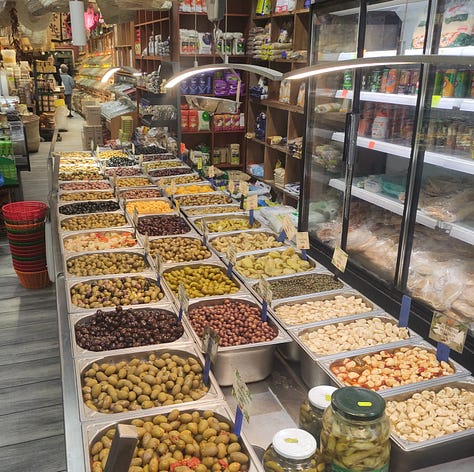
Saladin Épices du Monde
72 la Canebière
13001 Marseille
salaedine-epices-monde.fr
Pompe à l’huile
Olive oil orange blossom bread
When we were in Marseille, we had breakfast each morning at Pétrin Couchette on Cours Saint Louis, usefully right next to The Shop. Each day, I had coffee and a pompe à l’huile, the softest most comforting roll, similar in texture to brioche and fragrant with fruity olive oil and orange blossom water. You can eat them on their own, or with butter and jam or honey. I like them with salted butter and marmalade.
Pompes à l’huile (oil pumps) were traditionally made at the end of the pressing of the olives, when farmers tossed flour into the presses to clear out the last of the oil. Of course, nothing was wasted and the oil and flour were turned into this sweet bread.
They are also a traditional part of the Christmas Eve gros souper (great supper) in Provence when 13 desserts are eaten, including pompe à l’huile, fruits, nuts, dried and candied fruit, nougat, fruit pastes, and calissons, the lozenge-shaped sweets from Aix-en-Provence made from melon fruit paste, almond paste and royal icing.
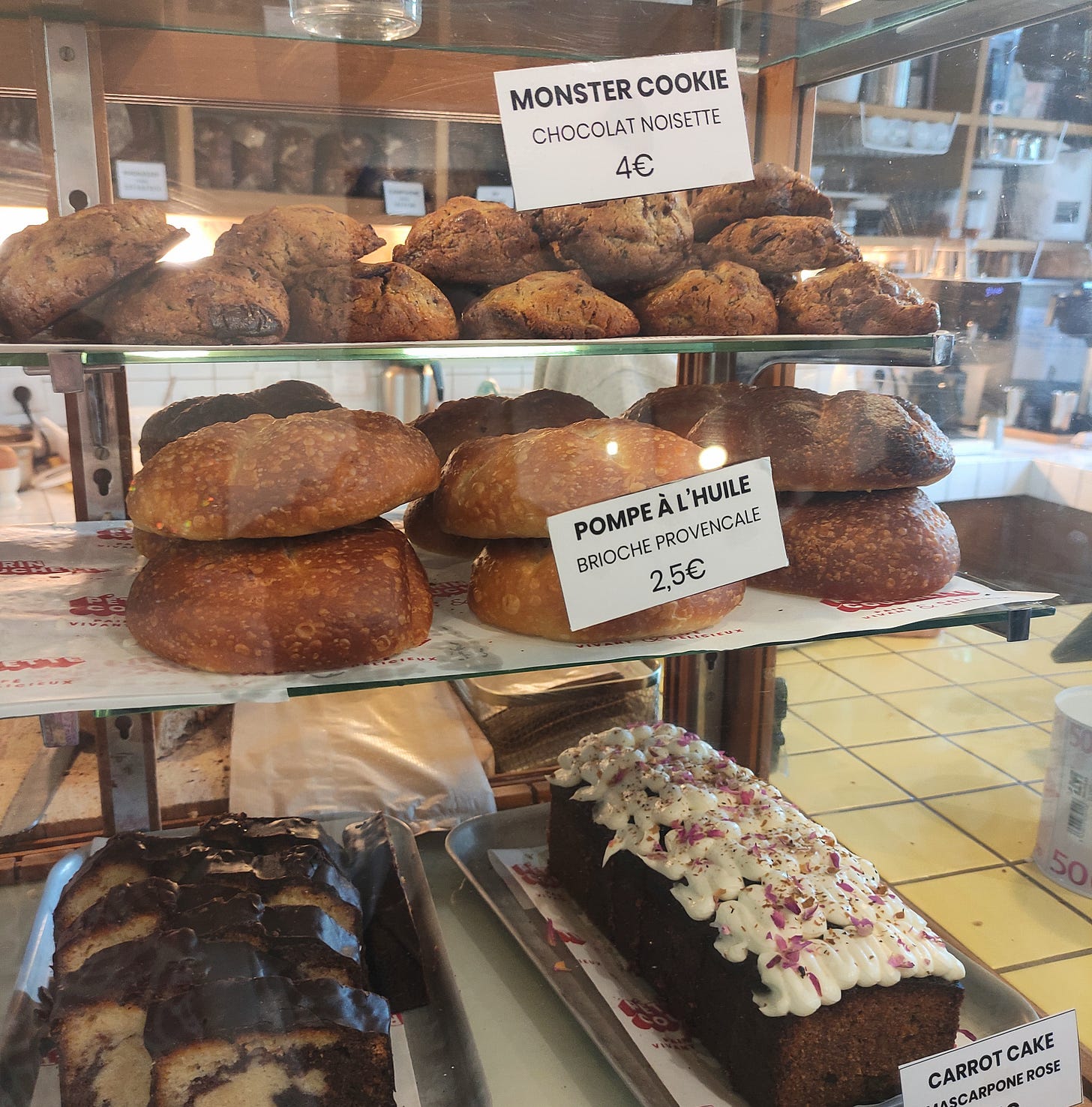
Makes 4 large rolls or 1 large bread – they keep for about 12 hours
Keep reading with a 7-day free trial
Subscribe to Lickedspoon with Debora Robertson to keep reading this post and get 7 days of free access to the full post archives.

